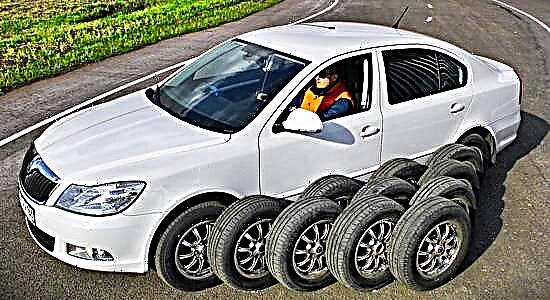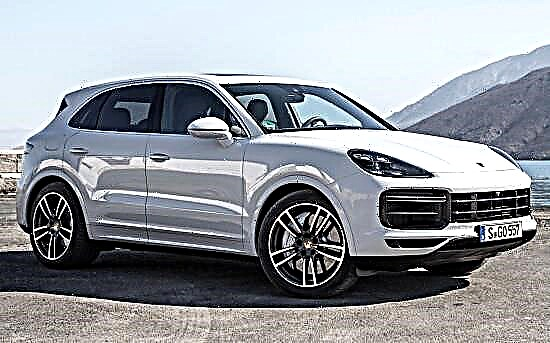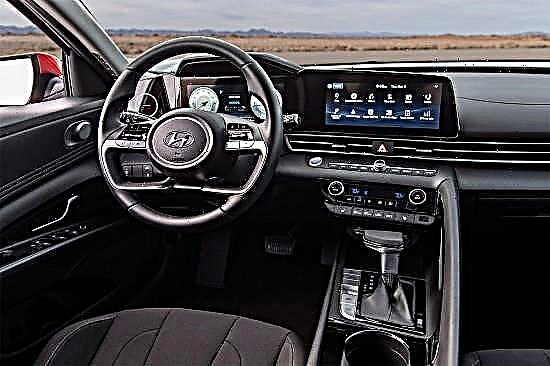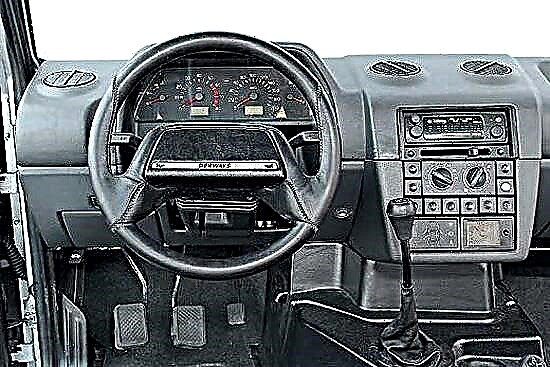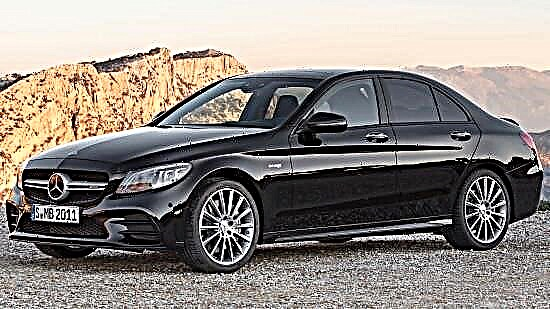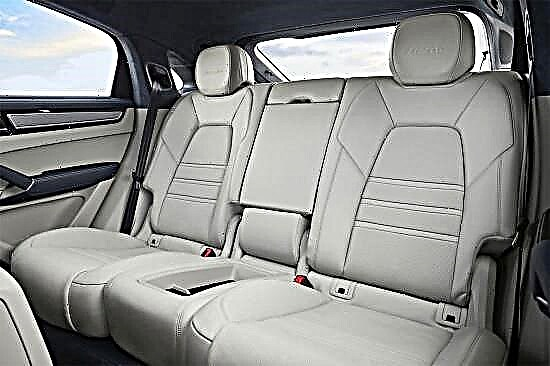When the winter period approaches, many motorists live in the hope of an "Indian summer", but, unfortunately, the arrival of cold weather is inevitable, and often winter comes extremely unexpectedly, catching many by surprise. That is why it is worthwhile to take care of purchasing winter "shoes" for the car in advance, in order to protect not only yourself, but also other road users ...
But how do you choose the most optimal spike tires for your "iron horse" from the variety of options on the market? After all, car owners should take into account a huge number of factors, at least much more than when choosing tires for the summer, and it is extremely difficult to do this without certain skills. To alleviate the "suffering" of many motorists, real road tests were organized, carried out in conditions close to combat, in which twelve sets of "toothy" tires of 205/55 R16 dimension, representing different countries of manufacture and performing in different price points, took part at once. segments.

Test participants:
- The top group includes some of the most advanced tires, and among them is the novelty of the season, namely the German Continental IceContact 3spiked with an aluminum body. The remaining two options are new items from last year: the first is tires Nokian Hakkapeliitta 9cooked in Finland; second - Michelin X-Ice North 4, which are produced in Russia. It is noteworthy that the Continental and Nokian studs can boast of two types of studs at once, while the Michelin's distinctive feature is the presence of two hundred and fifty studs.
- The largest segment is mid-range studded tires, accounting for about half of all tire sales. Five sets of "shoes" got here at once: Nordman 7 and Yokohama iceGUARD iG65having Finnish and Japanese roots, respectively, but made in Russia; Gislaved Nord * Frost 200 originally from Germany; South Korean Hankook Winter i * Pike RS2; sufficient fresh Toyo Observe Ice-Freezer Japanese origin, but Malaysian "welding".
- Budget "players", whose share in the Russian market has already exceeded a quarter, but only a few sets of such studs got into the tests: Roadstone WinGuard WinSpike; Russian Viatti Brina Nordico and Tunga Nordway 2; as well as Chinese Sailun Ice Blazer WST3.
It is noteworthy that according to the requirements of the Technical Regulations of the Customs Union, tires with a standard size 205/55 R16 can have no more than 119 studs (that is, up to 60 "studs" per one running meter), and only Roadstone and Viatti, which have 98 and 92 spikes, respectively. The rest of the tire workers chose a different (more complicated) way - they used the clause of the Technical Regulations, according to which a larger number of "claws" can be used if it is proved that they wear out the road surface within acceptable limits.
It is worth noting that the "white" (that is, on winter surfaces) tests of studded tires were carried out at one of the polar ranges at temperatures up to 25 degrees, and the "shoe" was carried by a popular on the Russian market (and not only) a golf-class car ...
Ice tests
It's no secret that ice is one of the most insidious and tricky surfaces, on which, as a rule, the main battle of spikes unfolds. Well, the first tests that all the "experimental" underwent were acceleration for a while from standstill to 30 km / h and subsequent braking (braking distance) from 30 to 5 km / h.
In this case, the result turned out to be extremely expected - Michelin tires with 250 spikes showed themselves better than the rest, on which it took the car only 6.9 seconds to accelerate to the required speed, and 17.1 meters to decelerate. The worst performance is in the Chinese Sailun, which is almost two and a half times behind the leader - 16.1 seconds and 39.6 meters, respectively. Nobody expected such an impressive difference in longitudinal grip tests!
The next exercise is a timed ice loop (where lateral grip comes to the fore). Interestingly, here the greatest number of "claws" did not help Michelin to hold on to the first position - they were content with only "silver" (19.4 seconds), while "gold" for holding "sideways" was won by Continental and Gislaved (19.1 seconds), which showed best time. A clear outsider is Toyo with a score of 21.7 seconds (that is, 15% lag behind the best).
Equally important when driving on ice is handling, and with ESP turned off. The palm in this discipline went to Michelin, in which the car distinguished itself with the most reliable behavior, clear reactions and excellent information content. Moreover, these tires made it possible to go stably fast on the verge of a breakdown, since if they began to slip, then it was smooth and predictable.
Compared to the leader, the Continental, Hankook and Nokian spikes did not impress with anything special, however, they did not have any obvious flaws in their behavior.
At the same time, if Sailun, Tunga and Roadstone showed themselves, then only from the negative side - the car upset them with unpredictable breakdowns in a long slide and incomprehensible reactions to steering wheel manipulations, why on the ice it is better not to meddle with them!
Snow tests
The next cycle of "white" tests is snow. And here, first of all, acceleration was carried out from standstill to 40 km / h and deceleration from 40 to 5 km / h, and for each measurement a fresh section of the snow plateau was used.
In acceleration, Continental tires topped the podium with a score of 5.4 seconds, but ahead of Michelin by just 0.1 seconds. Among the worst this time were Roadstone and Tunga, where the acceleration took 6.3 seconds (that is, 17% longer than the leader).
In braking, Michelin were able to regain the title of favorite, slowing down at 14.4 meters, although they were ahead of the closest pursuers in the face of Gislaved and Continental by only 0.1 and 0.2 meters, respectively. Tunga tires performed worse than the others, but their lag behind the "gold medalist" was quite insignificant - 15.9 meters.
After comparing the grip properties on the snow, it was time to assess the handling on the same surface, and in two modes at once - restrained and active (in the second case, the car was started sideways).
In both variants, Michelin studs excelled in the best handling, and all thanks to precise responses to steering and gas pedal manipulation, predictable behavior and smooth and understandable glides. The exact opposite is the Tunga, which have shown significant delays in reactions, and often also a complete loss of control over the car.
Another important exercise is "rearrangement", that is, an abrupt change of lane. And here Michelin tires left everyone behind due to impeccable behavior and excellent reactions, while Roadstone and Sailun created considerable problems - in both cases it was necessary to turn the steering wheel to a too large angle due to too serious delays. On a simple road, this can be fraught with various consequences!
The next step is to assess the directional stability and behavior of the car during smooth maneuvering at a speed of 100 km / h. Here, the experts did not have any questions at once to the four experimental subjects - Continental, Hankook, Toyo and Yokohama. But the Tunga are outsiders again: these spikes showed an insufficiently informative steering wheel and thoughtful reactions. Moreover, on budget Russian tires, the car went into a skid even with smooth maneuvering, which at high speed can lead to a serious accident.
Well, and the last "white" test - "rowing" properties in deep snow, that is, cross-country ability. Continental, Hankook, Nokian and Nordman proved to be more confident than others on the virgin snow - behind them and a confident start, and predictable maneuvering, and trouble-free reversing. But on the Tunga tires it is better not to meddle in the snow - there was not enough effort to move the car, stopped in the snow, from its place.
Summing up the results of ice and snow tests, we can make an obvious conclusion - Michelin tires, in terms of the totality of the results, are unattainable here. Of course, it is expected that they showed themselves excellently on the ice - after all, the record number of studs affected, however, their protector does its job perfectly, as evidenced by some of the best results in exercises on the snow. "Silver" went to Continental, and with a very noticeable lag behind the leader. The South Korean Hankook closed the "podium" and were able to outplay Nokian. They were followed by Norman, Yokohama, Gislaved and Toyo. But the "budget group", as expected, closed the "white" rating in the following sequence - Viatti, Roadstone, Tunga and Sailun.
Asphalt tests
It often happens that in winter, car owners are forced to drive more not on ice or snow, but on open asphalt, which is especially important for residents of large cities. Therefore, the so-called "black" tests of studded tires, which in our case were already carried out at one of the Russian proving grounds in the spring, when the air temperature did not rise above +8 degrees Celsius, play an equally important role.
The first of the asphalt tests are fuel efficiency measurements combined with an assessment of directional stability at a speed of 130 km / h.
The Gislaved and Nokian tires were more pleased than others due to their good reactions, reliable behavior and understandable information content, while Roadstone and Tunga disappointed with low information content, delays in reactions, forcing the steering wheel to turn at significant angles, and unpleasant delayed steering of the rear axle, leading to a skid ( that is, on outsiders - it's dangerous to drive fast).
As for fuel efficiency, here Nokian, Nordman and Hankook turned out to be the least "voracious", both at city (60 km / h) and highway (90 km / h) speeds. But on Tunga tires, the car needed the most fuel in both cases.
The last stage of the combined ride is the assessment of acoustic comfort and ride smoothness, and it was carried out not on smooth asphalt, but on a surface with all kinds of flaws that occur in real life: potholes, cracks, swollen seams, etc.
The Hankook spikes were distinguished by the lowest noise level, while the Nokian tires pleasantly surprised with a truly "premium" ride, as they seemed to protect the riders from all the defects of the road. Tires Continental, Hankook, Michelin and Toyo did not cause any serious criticism, however, they did not receive admiration, but here the Tunga also trudged in the rearguard - it turned out to be the most uncomfortable, and in all aspects, without exception.
Asphalt exercises are completed by braking on wet and dry surfaces, but at different speeds: in the first case - from 60 to 5 km / h, and in the second - from 80 to 5 km / h (in order to exclude ABS interference).
On wet pavement, the fastest way for the car to stop was on Continental studs, with braking distances of only 19.3 meters. Only a dozen centimeters lost to the leader Gislaved and Nokian.
On a dry surface, Yokohama tires became "gold medalists" - the car "rolled away" on them only 33.5 meters. But Continental here took the second place with a minimum gap of 0.1 meters.
The outsider is the same in both disciplines - Tunga: on wet asphalt their braking distance was 22.6 meters, and on dry - 37.1 meters.
The best in asphalt disciplines were Continental, Gislaved, and Nokian - all of which performed similarly across all exercises. Yokohama staked out the fourth position, which displaced Michelin tires into the “mid-price segment”. Well, then the following spikes are located - Hankook, Toyo, Sailun and Roadstone. It is noteworthy, but Nordman in this case "slipped" into the "budget zone", ahead of only Viatti and Tunga.
SUMMARY RATING
The unconditional leading position was taken by Michelin X-Ice North 4 tires - according to the test results, they were recognized as the best winter spikes, which really showed themselves brilliantly on snow and ice. And in other disciplines, although they did not stand out for outstanding results, they stably kept at the top level of the average price tires.

As surprising as it may sound, the most balanced spikes in all respects were Continental. It was they who boasted the most stable results both in the “white” and in the black tests without an obvious deviation in one of the planes. That is why IceContact 3 is a universal tire.
Closed the "podium" tires Nokian Hakkapeliitta 9, which proved to be better on asphalt than on snow or ice, which is why they got the right to be called "city". And their fuel efficiency indicators are at their best!
The Hankook Winter i * Pike RS2 studded tires were only slightly behind the “bronze medalist” - they not only became the leaders in the mid-price segment, but also won the title of “Excellent Tires”. In terms of economy, these are some of the best tires, and on ice and snow they are almost comparable to the Continental and Nokian.
It is worth noting that all of the above options can be attributed to the group of "Excellent tires", which, in their totality, will suit any driver, up to those who like active driving.
Yokohama iceGUARD iG65 spikes are in fifth position, becoming the best among the Good Tires. The term "universal" can be applied to these tires, since they distinguished themselves by decent performance on asphalt and average on ice and snow, however, in terms of comfort, they are rather comparable with representatives of the budget zone.
Closed the "TOP-6" tires Nordman 7 - they proved themselves extremely confident on "white" surfaces, but on the asphalt "rolled" approximately to the level of budget products, thus having only for measured driving. True, these are the leaders in terms of efficiency!
The seventh place in the overall standings was staked out by the Gislaved Nord * Frost 200 tires - they showed themselves well on snow and ice, normally clung to the asphalt and at the same time did not disappoint with the level of comfort. But in terms of efficiency, they have very modest achievements.
All the so-called "good guys" will quite justify the expectations of most drivers who prefer to drive slowly, without driving habits.
Interestingly, only the Toyo Observe Ice-Freezer became "Mediocre Tires", which failed to show outstanding results neither on snow and ice, nor on asphalt. In addition, they distinguished themselves only by an average level of comfort, and their efficiency was slightly below average.
A couple of representatives of the budget segment logically settled in the zone of "Weak tires", without even imposing serious competition on their mid-price colleagues. Here the "leading" position (but only the ninth place in the overall standings) went to Viatti Brina Nordico - if their performance on winter surfaces is self-sufficient, then on asphalt they are really weak. However, in terms of comfort and efficiency, they even managed to show comparable results with the "Medium Tires". We can say this about a domestic product - they are very good for residents of the provinces, who rarely get out on the asphalt. The tenth line is occupied by the Roadstone WinGuard WinSpike tires, which distinguished themselves (if I may say so) by modest performance in all disciplines without exception. In general, such spikes allow you to drive carefully and slowly on both "white" and "black" roads, but without fanaticism, and best of all with constantly working electronic assistants.
The last two places are the Bad Tires zone, which includes the Tunga Nordway 2 and Sailun Ice Blazer WST3, which took the eleventh and twelfth lines, respectively. At the same time, the former have the worst objective and subjective results on snow and asphalt, as well as in terms of comfort and efficiency, while the latter have a complete failure on ice and extremely modest performance on snow. True, Sailun was able to slightly surpass Nordman on asphalt, and Gislaved in terms of economy.
If “bad tires” are worth buying, then only those motorists who drive at an exceptionally calm pace on hard roads, cleared of snow and ice, since on slippery surfaces such tires can be unpredictable even on cars equipped with a full range of electronic limiters.But for novice drivers, it is categorically not recommended to purchase them at all!
If we take into account the economic side of buying certain studded tires, then in the budget category the most profitable are Viatti Brina Nordico, while the cost of Roadstone WinGuard WinSpike and Tunga Nordway 2 is clearly a little overestimated against the background of their abilities. At the same time, the price tag of the Sailun Ice Blazer WST3 is quite fair to itself - it is as low as the possibilities of studs.
Those who want to shoe their "iron horse" in more or less normal tires of the mid-price segment should pay attention to the Hankook Winter i * Pike RS2, since they can be called generally the most profitable in the overall standings. You will be able to save a little when purchasing the Gislaved Nord * Frost 200, Nordman 7 and Yokohama iceGUARD iG65, while the cost of Toyo Observe Ice-Freezer, although quite a bit, is higher than fair.
Well, if there is an opportunity to take studded tires from the "top" options, then here the best option is Michelin X-Ice North 4, the price of which looks extremely reasonable, especially against the background of their decent results. For the rest of the "tops" will have to overpay: for Continental IceContact 3 - a little, and for Nokian Hakkapeliitta - quite noticeably.

